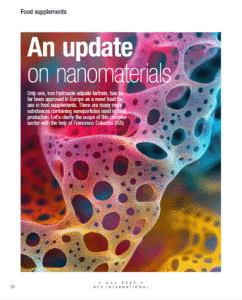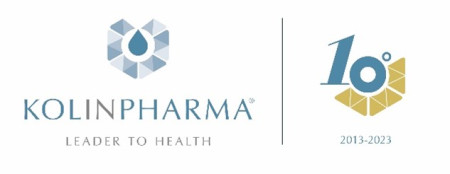IHAT Featured as Sole EFSA-Evaluated Nanomaterial in NCF Magazine
NCF Magazine publication confirms “there is currently only one case of a nanomaterial proper that has been evaluated by EFSA for its safety, Iron Hydroxide Adipate Tartrate (IHAT)”
Nemysis Ltd. is pleased to announce that our innovative proprietary iron supplement, IHAT, has been featured in an article by Francesco Cubadda of the Italian National Institute of Health – ISS in the May 2025 issue of NCF International Magazine.

https://static.tecnichenuove.it/ncfinternational/2025/06/NCFW_01_NANOMATERIALS.pdf
In the article, Francesco Cubadda, provides a summary of the emerging field of assessing, approving and the ongoing monitoring of nanomaterials in food within Europe and specifically acknowledges IHAT as not only the first but the “only case of a nanomaterial proper that has been evaluated by EFSA for its safety”.
IHAT pioneered such assessment when it was independently evaluated by the European Food Safety Authority (EFSA) and was found to be safe both as a Novel Food (under Regulation (EU) 2015/2283) and as a source of iron (under Directive 2002/46/EC). EFSA’s positive opinion, published in December 2021, validated the safety and bioavailability of IHAT based on rigorous scientific evidence and supported its inclusion by the European Commission among the ingredients permitted for the production of food supplements (under Regulation (EU) 2024/248) on 17 June 2024.
The European framework and the work of EFSA in leading the governance and assessment of nanomaterials is import, opening the possibility of products such as IHAT, which was designed to mimic the natural nanostructure and absorption pathway of dietary ferritin, preventing the triggers adverse safety considerations and side effects common to all other iron supplement forms.
Nemysis Limited, as a small and entrepreneurial company focused on proprietary R&D, is proud to be the holder of the know-how, technology and rights to IHAT and, following its independent assessment as safe, to be working with distribution partners to commercialise IHAT, the first nanomaterial ever approved for use in food supplements in the EU.
Given the article’s recognition of IHAT’s unique position as the “only nanomaterial proper that has been evaluated by EFSA for its safety”, Nemysis takes this opportunity to thank the inventors, Dr. Comelli, Dr. Faria and Dr. Kessler for their commitment in the development and approval of IHAT, as well as the support of the EU, EFSA, the Joint Research Council and the network of national reference laboratories in pioneering the assessment and monitoring of this innovative and important category of materials within nutraceutical science and our other stakeholders.
Dr. Comelli commented “We are delighted with the results of the development and approval of IHAT and the role we can play in deploying the first and only approved nanomaterial technology for the betterment of health by addressing such prevalent conditions as iron deficiency and iron deficiency anaemia. It is never easy being ‘the first’, but we are grateful for the vision of the EU bodies and regulatory framework in supporting the appropriate safety assessment and monitoring of these important materials and feel rewarded that IHAT is already helping sufferers, particularly in the Women’s health space, to use this new technology to more safely and effectively replete their iron levels.”

